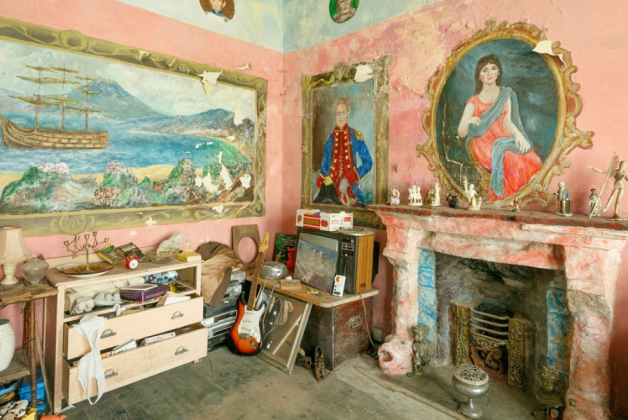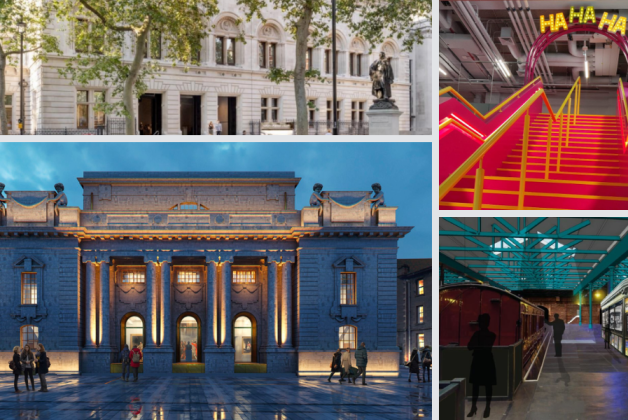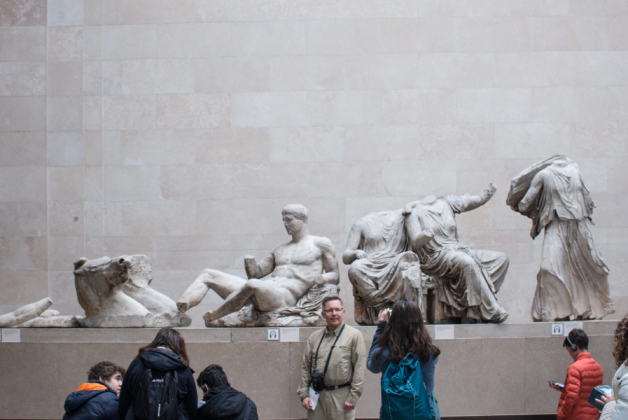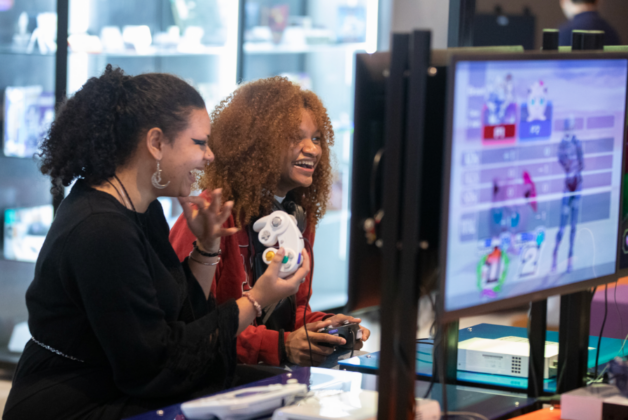Advisor spoke to three organisations about how they plan and use interactivity in their galleries and exhibitions. From encouraging families to enjoy museums together through simple mechanical interactives, to keeping up with the technology that people now carry in their pockets we find out what works and what doesn’t.
Amanda Chinneck, Senior Exhibitions Manager, National Media Museum in Bradford
Interactivity brings content to life. In our temporary exhibitions this might be content delivered in person by museum staff, an artist, an actor or a special guest. They might be telling a story, hosting a workshop or giving a talk. Then there are the more traditionally considered interactive elements, screen-based interactives, as well as mechanical interactives and we have examples of both here.
Our approach is to look at the content of an exhibition and the messages that we want to convey before deciding on levels of interactivity. Through the development of a content hierarchy and subsequently an interpretation strategy we work out what we want to say and then the most appropriate way to say it. At this point we look at the place to use interactivity as well as the most appropriate kind of interactivity to convey that message. Obviously there isn’t one approach for everything. In the past we have used screen based kiosks in our permanent galleries as we have had the resources to create animations or use moving footage to help explain or tell a story. However, with new and changing technologies we are now considering investing in tablet technology. These can act as mini kiosks – providing multiple layers of information; graphics, moving footage, interviews, text and still images in one small device. They are also relatively easy to programme. Now that tablets are recognisable both domestically and in education, this makes them both accessible and friendly for people to use in galleries.
There has been plenty of research done on the ways that people take in information through different media and about different personal learning styles. The best forms of interactivity, in my opinion, are hearing and seeing people live because we know that when done well, this method it has a huge impact. It is easy to underestimate what audience preferences are around interactivity in an exhibition context. We are often surprised by the ways that audiences interact with what is on offer; by what is popular and what is less so. One of our recent exhibitions, Moving Stories about children’s books from page to screen had a number of different layers of interactive interpretation. One of the most popular was the provision of a space designed for families to simply sit together and read the books that we’d focused on in the exhibition. We expected some visitors would be interested in doing this. However, we found that families absolutely loved having an area where they could pick up books and read and look at the pictures whilst being surrounded by the exhibition content and interact with each other. This was very satisfying and very low-tech interactivity.
All interactive elements have the potential to be very effective and successful but the trick is in choosing the right context. Mechanical interactives are not the only way to go in every situation. It would be very boring if museums only had screen-based kiosks or tablets too. There’s only so much you can take in during a physical visit and it would become a two-dimensional experience if screens were the only thing on offer.
Apps are, as yet, an untapped area for us which we are interested in investigating further. Augmented reality is another area that is very current. This could be an effective tool for interactive interpretation – it can offer more than you can convey in a static object caption. We are interested in exploring the possibility that this technology could offer us in future.
When I visit museums and galleries I find that live interpretation really brings subjects to life. In my opinion the important thing for museums and galleries is to provide a number of ways for people to access information. Everyone learns in different ways, so if you provide different layers or types of ways into your content, including different types of interactivity, you are more likely to provide your visitors with extra reasons to dwell longer or to want to find out more.
Emma Webb, Learning Manager, National Museums Scotland
We use interactive exhibits extensively in our permanent galleries and often within our temporary exhibitions. When we recently refurbished our galleries in Edinburgh we installed either mechanical or software interactives in every gallery; the Adventure Planet gallery is heavily populated with interactive exhibits. The more simple mechanical ‘lift the flap’ and ‘touch’ interactives are very popular with families who return again and again to the galleries and we introduce these to allow families to work together.
In our Adventure Planet gallery one of our most effective interactives is a game based on “Guess Who”. Visitors can immediately interact with it – they sit down and they already know what to do. It’s a simple format that they can recognise and understand. We also find that simple dressing up works very well for both children and adults. When interactives are too complicated and contain too much information, people simply won’t complete them.
When we are developing new exhibitions, the Learning and Programmes department will work with curators and the exhibitions team to develop the interactive elements. We develop them from scratch using third party specialists, but there are also off the shelf interactives which can be a useful starting point. Our internal and external teams consider where the exhibit should be placed and where it will work best. We also have a separate digital media department who are beginning to develop new digital opportunities for visitors to explore our collections and displays including the Museum Explorer app. This encourages visitors to explore the National Museum of Scotland in Edinburgh by tracking down nine mystery objects.
Interactivity is a bit of a catch-all term – it might mean a film, a game, an AV which animates the gallery, or an activity which involves doing something or finding something out. The way interactivity is now heading means that it involves not just museum designers but other external agencies – and we take inspiration from the wider technological world. Museums need to look more broadly at the things being developed outside of the sector. One of the most exciting opportunities for museums is aligning interactive experiences to match or reflect the technology visitors have in their pockets such as smart phones.
Alex Gaffikin, Interpretation Manager, Historic Royal Palaces
Finding new ways to get visitors interacting with our stories is one of the most important things that we do at Historic Royal Palaces, in both our permanent and temporary exhibits, and across each of the palaces themselves. Every palace has a unique history, and we try to tailor our visitor experience to match this. To achieve this we use a wide range of methods. Across our palaces we have costumed interpreters bringing scenes from history to life, in re-enactments that put visitors in vital roles. We find that immersing visitors in the history in this way is far more effective than including them as part of a placid audience.
We sometimes interweave costumed interpretations with mechanical interactives. Our ‘Knight School’ at the Tower of London during the summer holidays offers visitors the opportunity to train as a knight alongside ‘real’ medieval knights, and actually have a chance to fire a real siege engine. These mixes of mechanical and costumed interactives are a great way to really bring history to life, and are always very popular with families and younger visitors. Our mechanical interactives often come in the form of costumes and props that visitors can actually pick up and use.
Electronic interactives are also an integral part of many of our exhibitions. From interactive kiosks at The Tower of London, to interactive paintings in Hampton Court Palace’s ‘Young Henry’ exhibit, we’re always trying to stay on the cutting edge of technology. In one of our newest temporary exhibitions, ‘Fashion Rules’ at Kensington Palace, we have installed a bespoke version of the drawing app ‘Paper’, on ipads in the exhibition. The app is pre-loaded with a selection of fashion outline templates by fashion artist David Poole . Visitors can create their own fashion illustrations, taking inspiration from the Royal dresses they’ve just seen, and then share these using Wi-Fi, on social media, via email, or to an online gallery on Tumblr.
The process of creating every exhibition, performance, or installation is different. We start with the content and ideas and ask; what is the best way to convey this story? We then consider three points; The audience – their age, language, learning styles etc; the dwell time – how long we hope visitors will spend in the exhibit, on average; the practicalities of space, maintenance, power etc. From here, we brainstorm with our colleagues, to help us pinpoint what we want as the end product. From there, we can start to tailor the perfect interactive experience.




